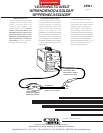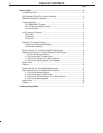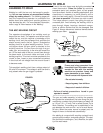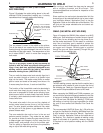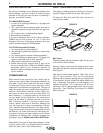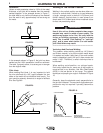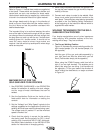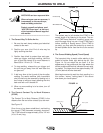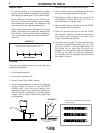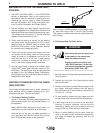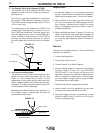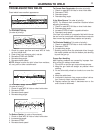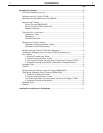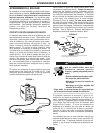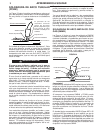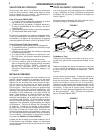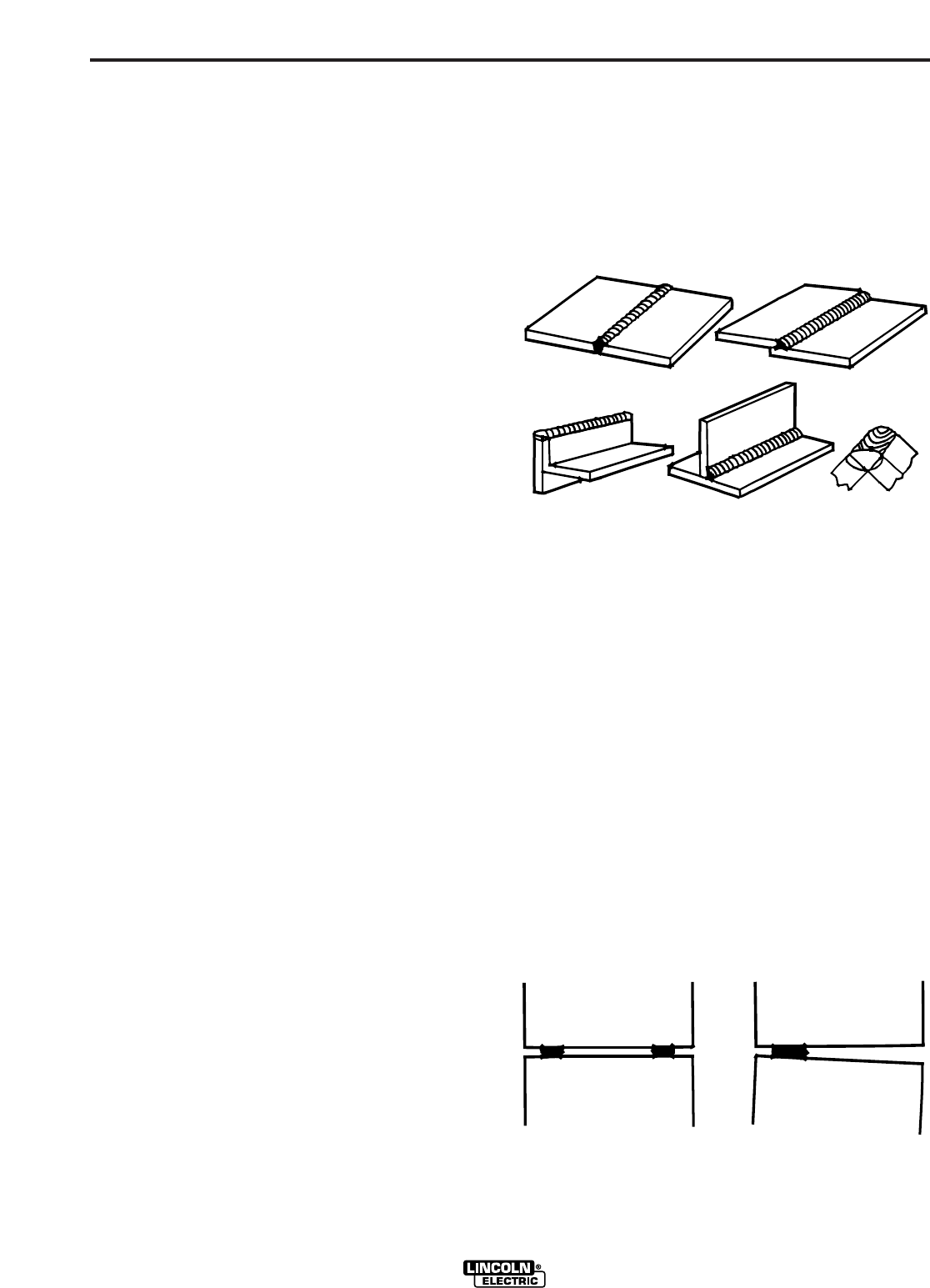
4
LEARNING TO WELD
4
PROCESS SELECTION
By gaining knowledge of the differences between the
two processes, you will be able to select the best
process for the job you have at hand. In selecting a
process, you should consider:
For GMAW (MIG) Process
1. Is most of my welding performed on 16 gauge and
lighter materials?
2. Can I afford the extra expense, space, and lack of
portability required for gas cylinders and gas sup-
ply?
3. Do I require clean, finished-looking welds?
4. Base metal must be clean.
If you have answered yes to all the above questions
GMAW may be the process for you. If you have
answered no to any of the above questions, then you
should consider using the FCAW process.
For FCAW (Innershield) Process
1. Do I want simplicity and portability?
2. Will welding be performed outdoors or under windy
conditions?
3. Do I require good all position welding capability?
4. Will most welding be performed on 16 gauge and
heavier, somewhat rusty or dirty materials?
5. Weld must be cleaned prior to painting.
6. Please note that your machine may or may not be
set up to handle both FCAW and GMAW welding
processes. Refer to your “Operators Manual” to
determine Option Accessories are required to adapt
to your machine.
COMMON METALS
Most metals found around the farm, small shop or
home are low carbon steel, sometimes referred to as
mild steel. Typical items made with this type of steel
include most sheet metal, plate, pipe and rolled
shapes such as channels and angle irons. This type of
steel can usually be easily welded without special pre-
cautions. Some steels, however, contain higher car-
bon levels or other alloys and are more difficult to
weld. Basically, if a magnet sticks to the metal and
you can easily cut the metal with a file, chances are
good that the metal is mild steel and that you will be
able to weld the material. If you plan to weld on alu-
minum, special drive rolls or aluminum Welding Kits
may be required or highly recommended. Consult
your machines Operators Manual. Pure Argon shield-
ing gas and a spool of aluminum welding wire will also
be required. For further information on identifying vari-
ous types of steels and other metals, and for proper
procedures for welding them, we again suggest you
purchase a copy of “Metals and How to Weld Them”.
Regardless of the type of metal being welded, in order
to get a quality weld, it is important that the metal is
free of oil, paint, rust or other contaminant’s.
JOINT TYPES AND POSITIONS
Five types of welding joints are: Butt joint, Fillet joint,
Lap joint, Edge joint and Corner joint. See Figure 5.
Of these, the Butt Joint and Fillet Joint are the two
most common welds.
FIGURE 5
Butt Joints
Place two plates side by side with a tight Fit-up to pre-
vent burn thru when welding.
Securely clamp or tack weld the plates at both ends,
otherwise the heat will cause the plates to move apart.
See Figure 6.
Now weld the two plates together. Weld from left to
right (if right handed). Point the wire electrode
between the two plates, keeping the gun slightly tilted
in the direction of travel. Watch the molten metal to be
sure it distributes itself evenly on both edges and in
between the plates. This is referred to as the “pull
technique”. On thin gauge sheet metal, use the “push
technique”. See “Welding Techniques for GMAW
(MIG) Process”.
FIGURE 6
Butt joint Lap joint
Edge joint Fillet joint Corner joint



